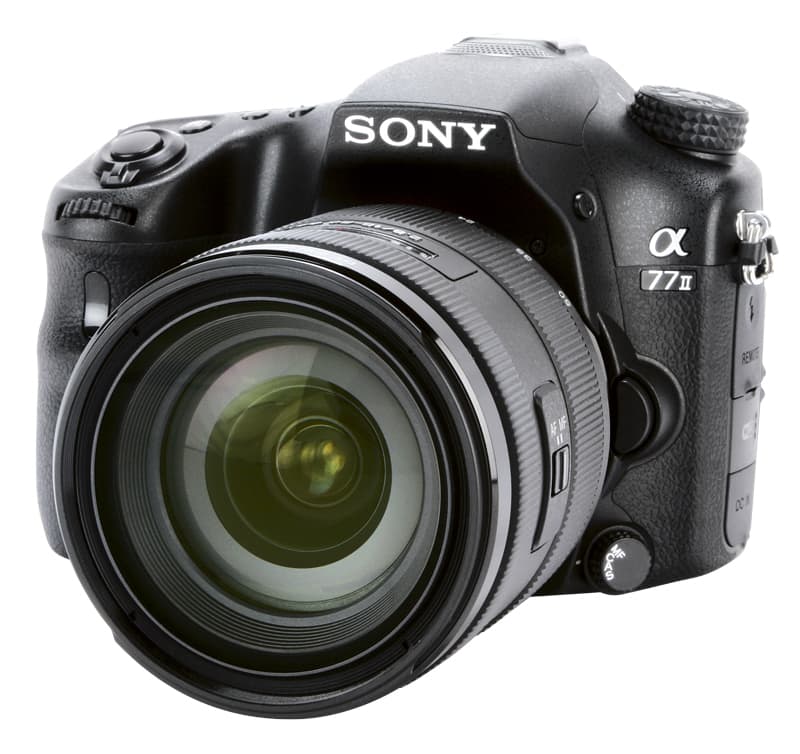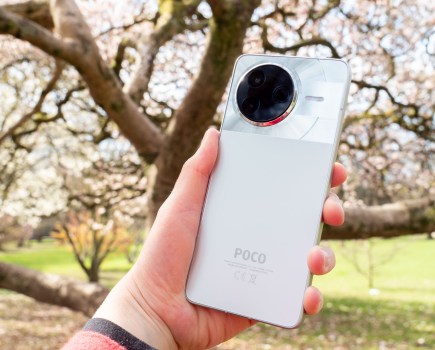Sony Alpha 77 II – pros
- Advanced 79-point AF system
- Easy, customisable menus
- Comprehensive Wi-Fi/NFC features
Sony Alpha 77 II – cons
- In-camera noise reduction can be harsh at higher ISO sensitivities
- No GPS
- 0.3EV loss due to translucent mirror
See sample images taken with the Sony Alpha 77 II
Sony Alpha 77 II review – Introduction
It has been nearly two years since Sony’s last A-mount SLT (single lens translucent) camera. Since then, the company has had much success with its premium compacts and E-mount mirrorless cameras, leading many people to question whether Sony would continue to expand its A-mount range.
We brought this subject up in conversation recently, when AP met with Sony’s technical marketing manager, Shiori Katsumata, at the launch of the Sony Alpha 77 II. She was keen to stress that Sony is still fully committed to its A-mount range of cameras, pointing to the new Alpha 77 II as a clear indication of this.
Upon its launch, Sony proclaimed the Alpha 77 II the ‘king of APS-C’. With a 24.3-million-pixel, APS-C-sized sensor, 12fps shooting and improved autofocus, the Alpha 77 II should have all the features required to challenge such APS-C giants as the Canon EOS 7D and the Nikon D7100 for the right to wear the crown.
Sony Alpha 77 II review – Features
Although the Sony Alpha 77 II uses the same 24.3-million-pixel-resolution, APS-C-sized (23.5×15.6mm) Exmor CMOS sensor as its Alpha 77 predecessor, it is an entirely new design. The camera also benefits from the latest Sony Bionz X processor, which is capable of advanced noise reduction. It also includes diffraction reduction technology and has improved JPEG sharpening. However, this processor truly excels when shooting bursts. The Alpha 77 II boasts an impressive rate of 12fps for 64 fine JPEGs or 25 consecutive JPEG + raw images before the buffer is full, compared with 12 and 11 shots respectively on its predecessor.
One of the headline features of the Sony Alpha 77 II is the inclusion of a staggering 79 AF-point autofocus system, for which Sony has developed a new phase-detection AF sensor module with a centreweighted algorithm. This enhances the camera’s ability to track subjects. In addition, Sony has improved the intelligence of the AF algorithm that allows the camera to predict movement, so users can track and follow subjects with greater ease. This will suit many enthusiast sports and wildlife photographers who rely on quick AF and subject tracking.
The Sony Alpha 77 II also features NFC and Wi-Fi connectivity, which can be connected to an Android or iOS smartphone or tablet via the Sony PlayMemories app. Additional apps can also be installed to add features such as time-lapse shooting.
Sony Alpha 77 II review – Build and handling
The impressive weather-sealed magnesium-alloy body of the original Alpha 77 is retained in the new camera. It is resistant to moisture and dust, which is an advantage for those wishing to shoot sports and wildlife.
Front on, the only discernible differences between the Alpha 77 and the new model are the removal of the AF assist beam (this function is now controlled via the flash) and the restyling of the Alpha branding from red to silver. The rest of the camera is largely unchanged and features plenty of buttons for specific settings. Instead of a D-pad, the Sony Alpha 77 II uses a multi-controller joystick to navigate through menus and toggle settings. Also, like many high-end DSLRs, the camera has front and back scroll wheels.
Together with Sony’s new Alpha 6000 compact system camera, the Sony Alpha 77 II features the Quick Navi Pro menu set-up. I found that this was great for changing commonly used settings without needing to go into the menus. In general, the settings are easy to find once you’re acquainted with them.
Weighing 647g body only, the camera is fairly heavy, but this adds to the solid feel in hand. The overall size is comparable to a Nikon D800 or a Canon EOS 5D Mark III, so it’s similar to other enthusiast DSLR cameras.
Sony Alpha 77 II review – Performance

Image: Focus peaking highlights in-focus areas, ensuring that the focusing is both precise and accurate even in difficult conditions
Over the course of six months, a team of five Sony engineers worked on designing the AF system for the Sony Alpha 77 II. They concentrated mostly on subject tracking, and trialled the system by shooting wildlife and sports. The result is a highly sophisticated AF that uses a new AF algorithm and phase-detection AF sensor module. This allows subjects to be identified and intelligently tracked across the scene.
When capturing fast-moving skaters with continuous AF, I found the focus was accurate and didn’t have any issues with tracking the subjects at speed. Shooting burst speeds of 12fps showed that the vast majority of shots were accurately tracked. With a total of 79 AF points – including 15 cross-type points – covering 40% of the frame, the Alpha 77 II, on paper, trumps much of its competition.
It’s possible to adjust the sensitivity of continuous focus, via the menus, on a scale of 1-5. Knocking the sensitivity back to the least sensitive setting means that, should an unwanted subject appear in shot, the AF will not switch to it. This is reversed when the sensitivity is set to its maximum.
Centreweighted and spot-metering options are present on the Alpha 77 II, with the evaluative multi-segment metering calculated using an advanced 1,200-zone system. When using continuous focus and tracking subjects, I found that spot metering exposed the subject well, even when the focus point was rapidly changing. Also, when shooting landscape images using multi-segment metering, the camera strikes a good balance between highlights and shadows without losing too much detail.

Image: With Sony’s wireless flash functionality, users can not only trigger off-camera flashes, but also use high-speed sync to capture fast-moving action
There are 15 white balance settings on the Alpha 77 II, and for most of these the colour temperature can be fine-tuned via a magenta/green and amber/blue bias control within the settings menu.
I found that the colours produced by the Sony Alpha 77 II are punchy and colour-rich. When shooting in sunny conditions, skies are often rendered as a well-saturated blue, while other tones also have a pleasing level of vibrancy. Of course, if you are not happy with the standard setting, there are various colour options and picture effects, including high-contrast mono, rich-tone mono, water colour and partial colour.
Images are reviewed on the rear 1.23-million-dot screen, featuring WhiteMagic technology. WhiteMagic is the addition of a white subpixel alongside the standard RGB pixels, which boosts the brightness level and reduces the power needed to illuminate the LCD. The advantage of WhiteMagic is particularly noticeable when using the camera in direct sunlight. Although the screen was, as usual, difficult to see in direct sunlight, it was still possible to use it to compose an image and it surpasses the capabilities of many other LCD screens.
Users can also compose images using the OLED TruFinder EVF, which has a resolution of 2.36 million dots and offers a 100% field of view. The manual-focus enlargements that are viewable through the EVF are fantastic and make light work of precise manual focusing. Both the LCD and EVF have an accurate colour rendition and great refresh rate.
Sony Alpha 77 II review – Resolution, dynamic range and noise
Resolution
Jpeg images achieve a result of 32 lines per picture height (lpph) at ISO 50 (extended) and ISO 100 on our resolution chart. Even at ISO 6400, a 28lpph score is achieved as a result of the powerful Bionz X processor. Sony’s raw software offers little extra in terms of resolution, but this may improve when Adobe supports the Alpha 77 II raw file.

Dynamic range
At the expanded ISO sensitivity setting of 50, the maximum dynamic range of 12.35EV is achieved. This is a respectable dynamic range for an APS-C sensor. When shooting landscapes in sunny conditions, the Alpha 77 II resolved adequate shadow and highlight detail. At ISO 800, the camera still captures just under 10 stops and it slopes downwards roughly 1 stop per EV from there.
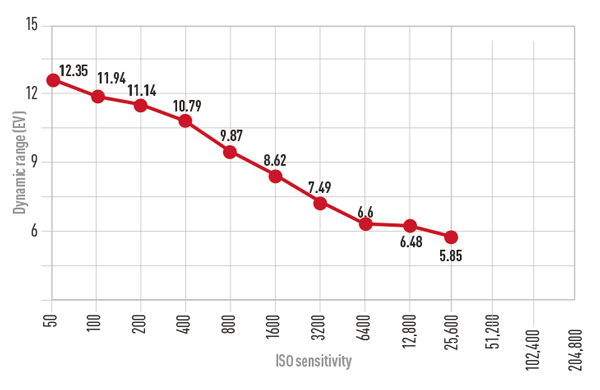
Noise
At ISO 100, images appear almost noise free. By ISO 400, we see a slight hint of luminance noise when pixel peeping. By ISO 800, some colour noise is noticeable mostly in the shadow areas, but this isn’t visible on an image printed at A4 size. Past ISO 6400 images are not extremely noisy, but the in-camera noise reduction is very heavily applied and breaks down much of the detail.
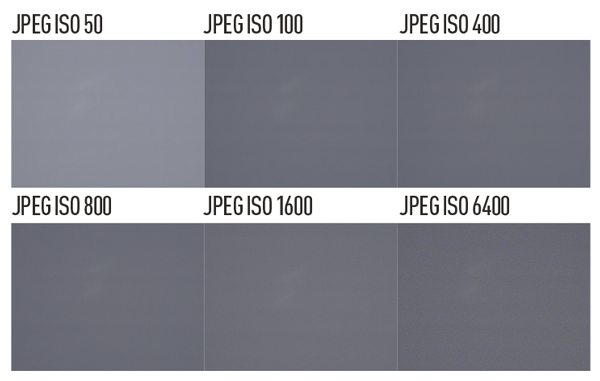
Sony Alpha 77 II review – Our verdict
The Sony Alpha 77 II is by no means a lightweight camera, but neither is it a shoulder-aching behemoth. Sitting comfortably between these extremes, the Alpha 77 II feels great in the hand. The menu system takes a while to get used to, but the button placement allows users to change settings quickly.
Pixel peeping shows evidence of in-camera noise reduction at high ISO settings. However, images previewed at A4 or full-size on a computer monitor look detailed, even at higher ISO sensitivities. I found for these sizes that pushing the ISO to 6400 was acceptable for balancing the level of detail with visible noise.
With the incredible array of features offered by the AF, this camera is certain to become a big hit with enthusiast wildlife and sports photographers. Until now, the functionality that is offered by the Sony Alpha 77 II has been reserved for pro-end DSLRs. However, with the Alpha 77 II, Sony has brought us a very advanced and effective AF tracking system inside a more affordable enthusiast-level camera.
Sony Alpha 77 II – Key features
As well as class-leading autofocusing, Sony has added a host of other excellent features
SLT
Following a long line of Sony SLTs, the Alpha 77 II features a fixed translucent mirror
Video
The Alpha 77 II features continuous phase-detection AF in video mode, and the ability to shoot full HD footage at 60p or 24p
Weather-sealed body
Weather-sealing is featured around main buttons, dials and the opening, so the camera is resistant to dust and moisture

Multi-interface hotshoe
The multi-interface hotshoe allows compatibility with flashes, microphones and other Sony accessories
GPS
GPS is missing from the Alpha 77 II, although it was included in the original Alpha 77. Perhaps Sony will add a Geotagging PlayMemories app that will allow GPS data from a smartphone to tag images
Electronic viewfinder
The XGA OLED EVF boasts 100% frame coverage and a wide 33˚ viewing angle
Articulated screen
The 3in LCD can be pulled out and positioned in various directions when shooting at high
or low angles
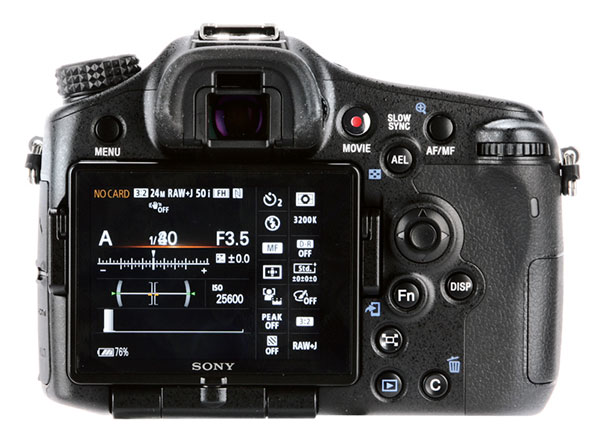
Hands-on review
Sony Alpha 77 II at a glance:·
- 24.3-million-pixel CMOS gapless Sensor
- ISO 100-25,600 (extended settings of ISO 50 and ISO 51,200 with multi image noise reduction)
- 2.4-million-dot resolution OLED Viewfinder with 100% F.O.V
- Articulated 1,230,000 Dot resolution White Magic LCD Screen
- 12fps shooting speed for 64 Fine JPEG or 25 raw+JPEG files
- 79 AF points including 15 cross-type AF points
- Wi-fi and NFC
- Full HD 1080p movie recording at 60p
- Continuous focus in video mode
Introduction
A flurry of cameras has been released by Sony in the past year. These range from full-frame CSCs right through to entry-level compact cameras. However, one area that has gone very quiet is the A-mount range of SLTs, which has left many people asking the question “Are Sony quitting the A-mount?”
When we met Shiori Katsumata for the Sony Alpha 77 II briefing, she gave us a succinct answer to that question: a resounding ‘No’.
Features
Superseding the Sony Alpha 77, the new Sony Alpha 77 II is a significant update upon its predecessor. Boasting a 24.3-million-pixel-resolution APS-C-sized Exmor CMOS sensor at its heart, and a host of other class-leading features, the Alpha 77 II has been hailed by Sony as ‘the king of APS-C’.
As we’ve seen in many recent Sony releases, the Alpha 77 II sports Sony’s Bionz X processor. This allows the camera to shoot at an impressive speed of 12fps – the same speed boasted by its predecessor.
However, the big improvement to speedy shooting comes from the stepped-up buffer capacity. Sony claims that when the Alpha 77 II is shooting full resolution Fine JPEG images, a speed of 12fps can be sustained for a total of 64 images, compared with just 18 images on the the original Alpha 77.
Also, it’s claimed a total of 25 consecutive images can be captured when shooting raw+JPEG simultaneously, which was limited to just 11 images on the previous model.
With a newly developed phase-detection AF sensor module with a centre weighted algorithm, the autofocusing should be vastly improved. A total of 79 AF points are featured, which cover 40% of the frame.
There are 15 cross points in the central area and nine group-AF zones. Compared to the 19 AF points and 11 cross-type points we saw on the Alpha 77, it’s fair to say the Alpha 77 II has had a radical overhaul in the autofocusing department.
Additionally, Sony says it has dramatically enhanced the AF algorithms to be significantly more intelligent, particularly when tracking subjects.
In continuous AF, subjects will be tracked and followed with more advanced predictions of movement. The Alpha 77 II’s focusing system was developed by a team of five engineers who worked for six months trialling the system on capturing football, trains, motor sports, wildlife and more. Sony has claimed it is capable of tracking objects at speeds up to 50km/h.

Sony has also given the user more customisable AF settings. These includes flexible AF areas and controllable AF tracking duration sensitivity to better match subject motion.
When I tested the tracking, using passing cars and cyclists as my subjects, the focusing was very fast. Using the AF tracking sensitivity settings, adjustable on a scale of 1-5, allowed me not only to track the subject with precise focus but also to make the system ignore new objects that intruded into the frame.
The Bionz X processor brings with it benefits of more advanced noise reduction, better sharpening and diffraction reduction technology.
Interestingly, the GPS mapping feature that was present in the Alpha 77 is not carried over into the Alpha 77 II. For some users who like to track their movements on a shoot, this may be a deal-breaker, however, the Alpha 77 II does now features Wi-fi and NFC, which I suspect for many people will prove a good deal more useful than GPS ever did.
Viewfinder and LCD
An increase in resolution has been made from the previous Alpha 77, with the Alpha 77 II now boasting a 3-inch, 1.23-million-dot RGBW LCD screen. This has a three-way tilting system, which allows the LCD to be moved in different directions for low/high-angle shooting
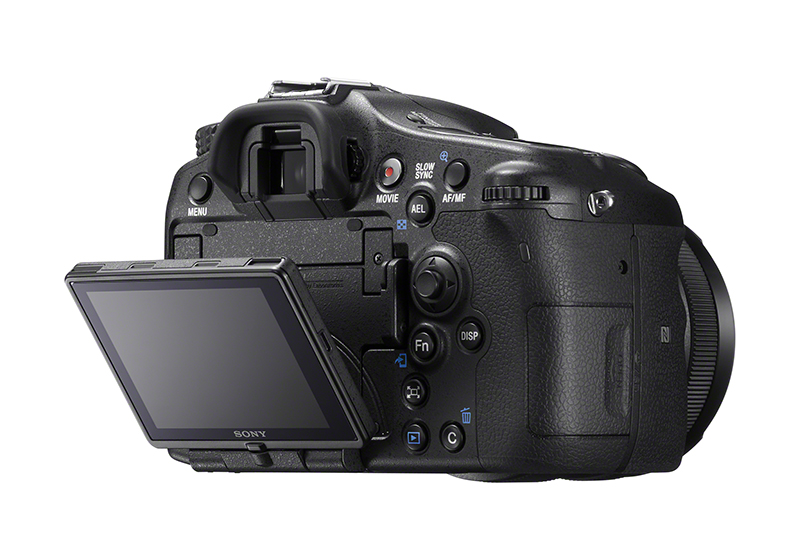
Comparing the pre-production sample of the Alpha 77 II that we used to the older Alpha 77, the advantages and improvements of the newer model were self-evident. The screen has fantastic clarity, and significantly more true-to-scene colour rendition than that of its predecessor.
In addition to the LCD, the Alpha 77 II features an Electronic Viewfinder. This is an OLED Tru-Finder EVF with 2.34-million dot resolution, and it boasts 100% coverage of the scene. As you might expect, it’s excellent – wonderfully bright and clear. I particularly like the manual focus enlargement options that allow precise focusing.
Build and Operation
In terms of looks, you could put the Sony Alpha 77 II beside its predecessor and be hard-pressed to spot many differences. If you look at the pair front-on, you’ll notice that the somewhat garish red dot that is the Alpha 77’s AF assist beam has been removed for the Mark II version. This AF assist function is now handled by the Alpha 77 II’s flash instead.
In body and styling they are near-identical, which isn’t a bad thing. The original Alpha 77 impressed us previously, and we found very few faults with its overall handling. The size of the Alpha 77 II is comparable to that of a Canon EOS 5D Mark III or a Nikon D800. The body is constructed from magnesium alloy, so it’s fairly heavy, but it does have the advantage of being weather-sealed, which should please wildlife shooters and other outdoor types.

Like the Sony Alpha 6000, the Alpha 77 II features a Quick Navi Pro function menu, which allows users to quickly change all of the main shooting settings with their right hand while remaining in a shooting position. This is just one of 11 customisable buttons featured on the Alpha 77 II. A total of 51 assignable functions are offered, allowing users to truly personalise the camera for their style of shooting.
First Impressions
For the amateur sports or wildlife photographers the spec sheet of the Alpha 77 II is very exciting indeed. With its 12fps shooting speed, it’s offering the kind of continuous shooting you would expect from flagship Canon or Nikon DSLRs.
My initial impressions of the new autofocus system are very good, and the Alpha 77 II looks like it could be a great camera for those who regularly need to track fast-moving subjects.
Personally I’m thankful that the build and handling has been tweaked rather than overhauled – the Sony Alpha 77 handled beautifully and its successor does much the same. If it ain’t broke, as they say.
With all its bragging rights, and at a cost of £1,549 (with a kit lens included), the Sony Alpha 77 II will certainly appeal to wildlife and sport photographers who are on a budget.

